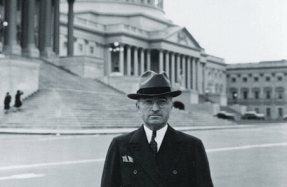

The date was set and preparations were underway. It would be a challenging mission, especially for 1934—a roundtrip flight from Washington, D.C., to Alaska with 10 of the Army Air Corps’ newest bombers, the Martin B-10. If successful, it could provide the air service with some much-needed positive news following an airmail fiasco from the previous winter, while also providing photo-reconnaissance of what was becoming recognized as a strategically important territory.
Lt. Col. Henry H. “Hap” Arnold would lead the mission. He had been taught to fly by the Wright brothers and was one of the world’s first military pilots. Later Arnold would be remembered as “the father of the Air Force” and his leadership of this difficult assignment foretold his future as commanding general of the U.S. Army Air Forces in World War II. “Arnold was a visionary,” says Dik A. Daso, author of Hap Arnold and the Evolution of American Airpower and Architects of American Air Supremacy. “He had a way of seeing the technology and recognizing what it was capable of, then compelling his people to do it. You see that time and time and time again.”
The operation also focused attention on junior officers who would also play important roles in the approaching global conflict. These men—Ralph Royce, Malcolm Grow, Harold McClelland and others—flew the airplanes, led photo-reconnaissance missions, coordinated logistics and handled other key assignments. Many were later promoted to crucial commands as America fought the air war across Europe and the Pacific. According to a 2011 Air Power History article by Kenneth P. Worrell, the Alaskan flight “brought together a select group of airmen who in a few short years would rise to top air force leadership roles during World War II.”
By the summer of 1934, the Army Air Corps was desperate






